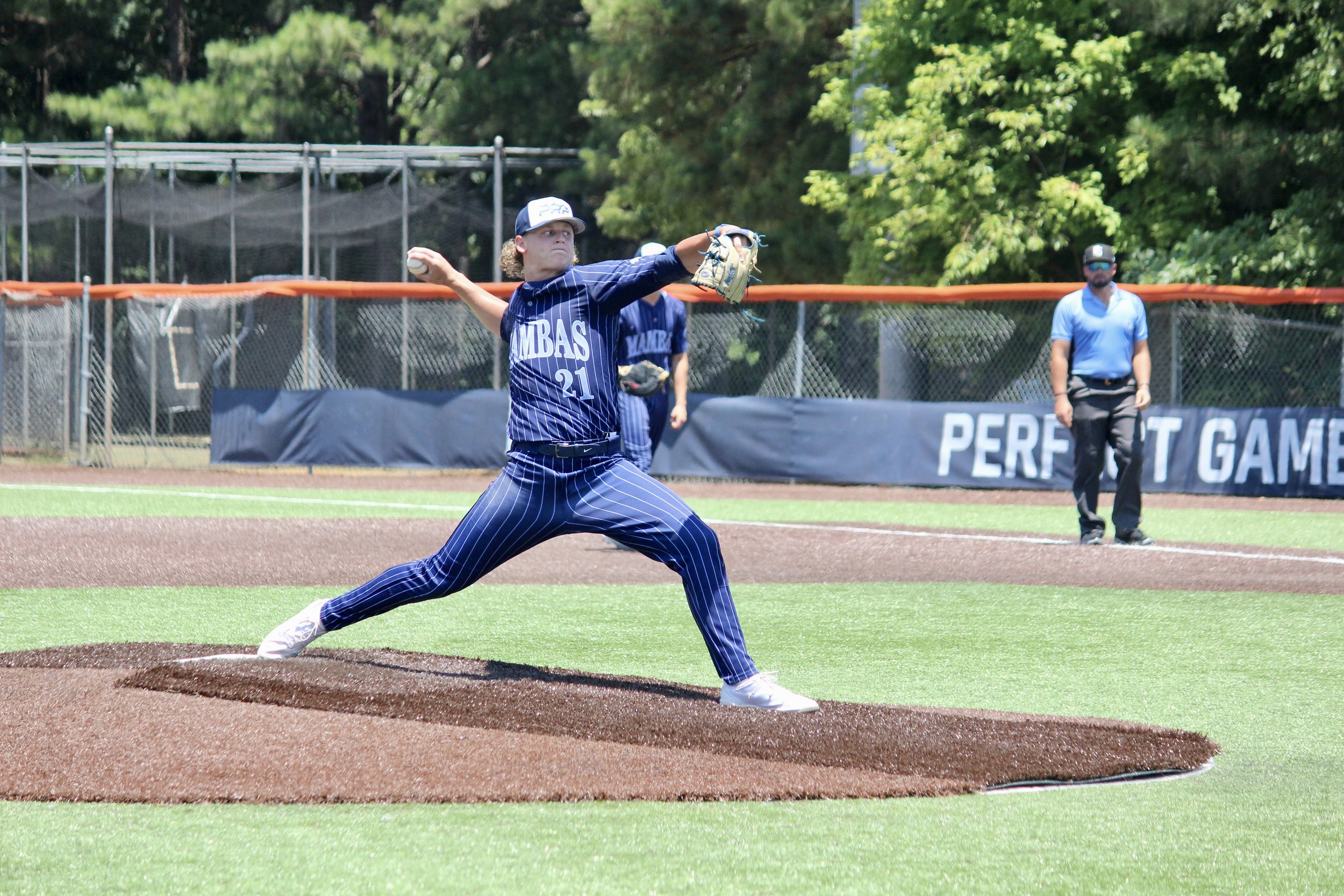Shuffle Pulldowns & Velocity programming: What and Why?
What are shuffle-step pulldowns?
Shuffle-step pulldowns have become popular across training facilities and organizations for high intensity velocity programming and tracking. These are a blend of “pulldowns” and crow hop throws. The shuffle-step allows the athlete to gain momentum but much less than the standard pulldown. See video below for demonstrations.
The shuffle-step pulldown typically ranges at 0-3mph harder than their mound velocity when executing these at 100% intensity.
The footwork looks like a lateral crow hop where the athlete steps forward with lead foot and shuffle steps behind to build momentum into the throw.
When should you do Shuffle-Step Pulldowns?
Programming the shuffle-step pulldowns can depend on several factors but in our experience we program them as follows:
Following a steady on-ramp program (3-5 weeks of throwing build up depending on age, time of year, and athlete needs)
On high intent days blending into mound progressions
In replace of pulldowns on velocity testing days
Following long toss progressions in catch play on high intent days
Before bullpens to ensure the arm and body are prepared for peak stresses on the mound
In a velocity program with overload and underload implements
The shuffle-step progression can begin at an 80% effort level to gage where the body and intensity are currently in their build up. We will typically assess athletes at this 80% effort to provide them feedback both on where they currently stand and also to get an understanding of what 80% feels like. Most advanced movers are able to control their intensities while maintaining quality movement. Those that struggle with the 80-90% effort throws use this period to gain feel with their movements. We like to say “throw hard, easy”.
We typically program shuffle-step pulldowns on a long toss day which gives the athlete time to build up and stretch it out. Most assessment days are planned to have 6-8 shuffle-step throws. We average the throws and note the top velocity. Each day we test, we want to see the average increase. Bring the floor higher and watch the ceiling get bigger.
These can also be completed with overload/underload weighted balls depending on the programming, athlete’s needs, and time of year. Programming these implements should come after initial testing and controlled in volume. For example, adding 2-3 throws at 6oz and 4oz following 3-5 of the 5oz can provide a new stimulus to increase velocity.
Why Shuffle-Step Pulldowns?
The belief behind shuffle-step pulldowns is to blend high intensity throwing to the mound. The difference between shuffle-step pulldowns and mound velocity is much closer than the standard ‘run n gun’ pulldown. Our standard mound velocity average is about 1-3mph less than shuffle-step pulldowns. Pulldowns can average over 3-5mph more than mound velocity.
Most athletes have enjoyed the shuffle-step pulldowns as a bridge to the mound progression. They are used to this footwork in their compressions following long toss programs which allows for less skill learning of pulldowns and more athleticism in the testing.
Where most programs struggle to blend is the on-ramp phase to velocity phase. Everyone has different beliefs in types of testings and velocity improvement programming.
We strongly believe in assessing at varying levels at intensity as a part of the bridge from on-ramping. Each athlete will go through assessments in weeks 4-5 of our on-ramp program that include 80%-90% shuffle pulldowns to gage where they are at.
Goal is to see athletes get to previous mound velocity PRs in shuffle step pulldowns before clearing our on-ramp program. For example, if an athlete hit 85 in the fall then he should shuffle pulldown 85 before clearing the on-ramp program.
Velocity Programming:
As athletes clear on-ramp programming they will proceed into the velocity development phase or high intent phase, we will track shuffle-step pulldowns as a part of their weekly training schedule. This is one assessment and training tool we use along with plyo velocity testing, mound velocity, and pulldowns.
A typical high school pitcher velocity program could look as follows:
Last week of On-Ramp: Two High Intensity Days — Shuffle steps at 90%, 15 pitch touch and feel bullpen at 80-90%
Week 1: Shuffle-Step Pulldowns 100% & 20 Pitch Bullpen - 90-95%
Week 2: Plyo Velocity Testing & Shuffle-Step Pulldowns
Week 3; Mound Velocity & 20 Pitch Bullpen
Week 4: Shuffle Step Pulldowns & Mound Velocity
Week 5: Plyo Velocity & 25 Pitch Bullpen
Week 6: Shuffle-Step Pulldowns & Mound Velocity
From here, you can add time to the velocity program for more focus on building the engine and adding velocity.. If the athlete is progressing well, then begin focusing more on the mound progression, pitch design, pitch execution, and volume in bullpens.
There are several ways to handle a velocity program based on athlete age, training level, results of testings, and feedback from athlete. Providing different stimuli in high intensity settings will provide valuable feedback on what areas to attack the most to improve movement quality and velocity.



